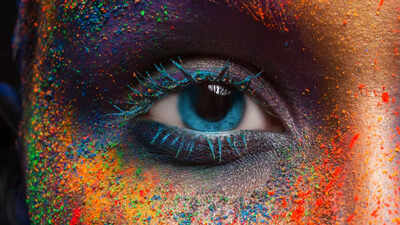Trending
Do we see colours the same way?
A new study investigates if everyone perceives colours the same way. University of Tokyo and Monash University researchers are using a novel method. This method maps colour experiences between individuals. The study includes people with colourblindness. The team aims to quantify aspects of consciousness. Initial findings suggest color perception differs between neurotypical and colourblind individuals.
Have you ever come across a situation where someone identifies a colour, for instance as red, but you feel it rather orangy or maroon? And you must have wondered, what’s the real color. Who is right? Is it red, orange or maroon? Well looks like this very fundamental question has led to the one of great importance in research into the human mind.
The researchers from the University of Tokyo and Monash University in Australia decided to dig deep into this question using a method that can map the experiences of colours between individuals, including those with colorblindness. The study published in , analysed whether my red is your red! The team led by Associate Professor Masafumi Oizumi’s and Professor Naotsugu Tsuchiya explores ways to quantify various aspects of consciousness. They started will the question “Is my red your red?”; or if two people’s subjective experiences might differ: “Is my red your green?”

“To begin to unpick this, we need to separate the experience of colours that people have from their labels, the colour terms like ‘red’ and ‘green,’ that people use when they refer to them,” Oizumi said in a statement. “Although it is notoriously difficult to explain our internal experience of ‘red’ by referring only to ‘red’ itself, we can relatively easily describe the relations between our experiences. For example, the experience of red is closer to pink than to green. Our strategy is to accumulate as many such relations between our experiences, or qualia, as possible.”

To understand this they introduced a novel experimental and computational paradigm called the qualia structure paradigm. This paradigm looks at relational structures of our experiences, called qualia structures, and then compares qualia structures across individuals on a structural basis, as opposed to comparing colours one-on-one. The specific colour labels are removed in this framework, and the optimal mapping between individuals’ subjective experiences can be made using only internal relations, which have been experimentally quantified.
“Using massive online experimental data from both colour-neurotypical and colourblind participants, we empirically found that colour similarity judgment data derived from colour-neurotypical participants can be correctly aligned at the group level, such that red correctly mapped to the same red or similar reddish colours. In contrast, those of colourblind participants could not be aligned with those of color-neurotypical participants, implying that colour-neurotypical red is relationally equivalent to other colour-neurotypical’s red, but not to colourblind people’s red,” Oizumi said.

The researcher also added that the limitation of the study is that, they however ‘did not perform any unsupervised alignment at the individual level. Therefore, we could not say anything about individual differences. To answer these questions, we need to perform an individual-basis alignment.’
Well, this is only a start, and the team are keen to explore other senses beyond sight, but also continue to explore how colour experiences can differ between specific individuals and not just at a group level.
End of Article
Follow Us On Social Media
Visual Stories
Tired of too many ads?










